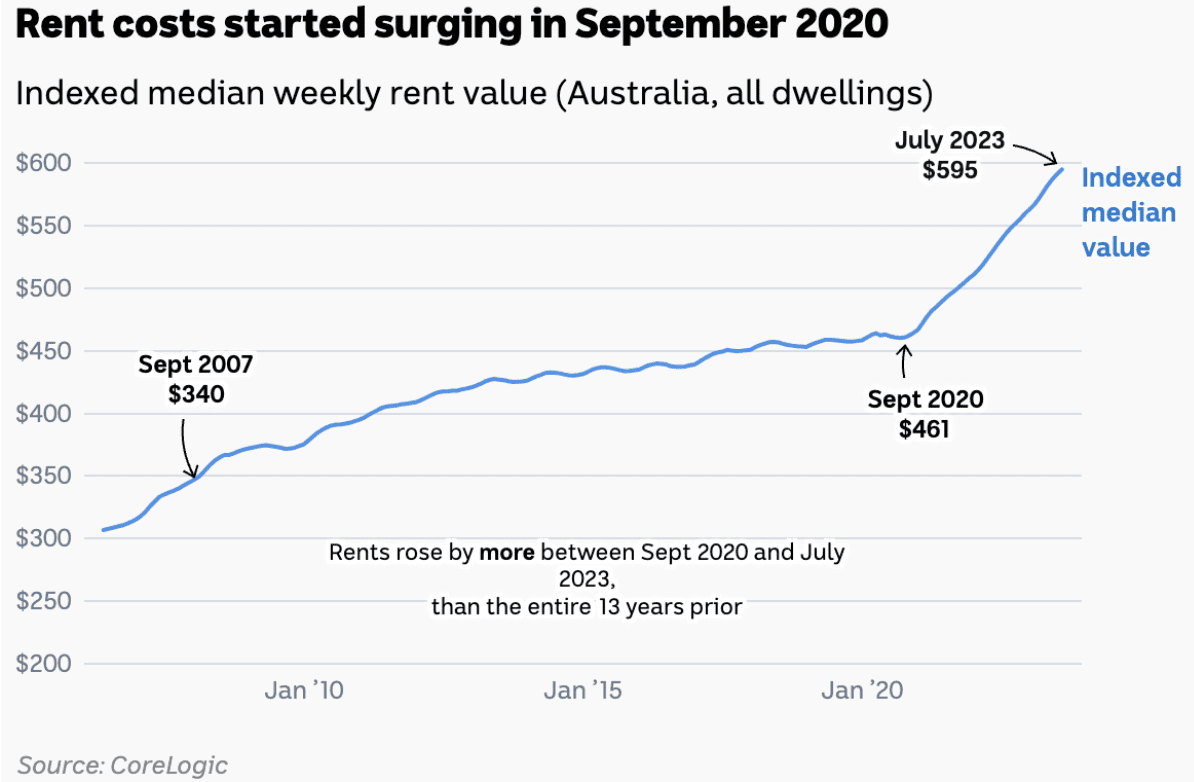Lynette, 75, was “looking down the barrel of a gun” when she was facing homelessness in December 2018. Now she lives in Shellharbour, where the average rental is $690 per week.
Lyn Bailey was 17 when she started working, and until her retirement at age 69, she brought home good money as a midwife. She was married in 1971 and bought her first home when she was 23. Thirty six years later, Lyn divorced. She was left with nothing.
Worse than that, Lyn was single, female and had four children: all factors that led to a bank loan being denied when she wanted to re-enter the property market.
“Up until December 2018, I never had much of an awareness of homelessness,” Lyn said.
“I bought my first home at 23 and I had my own home up until I got divorced in 2007, and we had to sell it due to that. At that point in time I went to the bank to see if I could buy something, anything really.
“A little one bedroom unit like the one I’m in now would’ve been just fine, but the bank manager just looked at me and said no; I replied with why not, and he simply stated, because you’re a female and because of your age. In reality, I was working full time as a midwife, and yet still being told I couldn’t get a loan on the basis of gender and age.”
On census night in 2021, it was estimated that 4947 young women were experiencing homelessness. In 2016, the census reported that for every 10,000 children aged 0-17, 45 of them were homeless.

Lyn Bailey, 75, faced homelessness during the beginning of a global pandemic.
Lyn was 27 when she had her first baby, if the census recorded homelessness as clearly as it does today, Lyn and her first child Michael would have been a statistic.
Although Lyn now has a roof over her head provided by the Illawarra Housing Trust, there is still a huge challenge lying ahead. In combat, the Illawarra Housing Trust has started development on their $5.5m Princes Highway Dapto project, providing nine homes to target and support single older women and women with children.
“These properties are about being close to shops, being close to schools, giving families the opportunity to become a part of a local growing community,” Illawarra Housing Trust told Win News Australia.
Lyn said that although these properties are a step in the right direction, there is still much more work that needs to be done.
“It is only nine properties and I don’t know when they are going to start looking for tenants,” Lyn said.

Lyn, 75, outside her home in Central Gardens, Shellharbour.
The Homeless Hub has conducted a research paper on the correlation between homelessness and the divorce rate. They found that the legal fees, along with the loss of a combined income, can contribute to homelessness, especially for women.
Lyn has struggled since her marriage breakdown at age 69. This is surprisingly common, with 25.8% of women aged 55-74 experiencing divorce. Although Lyn worked her entire life, she was still left with little to no superannuation at retirement age.
Betting on a lump sum from the selling of the family property, she was left with virtually nothing when the divorce was finalised. Lyn worked past the retirement age just to make ends meet, and was left high and dry by the NSW Government. Some days she didn’t even have enough money to put petrol into her car.
“I felt rejected as it was, but on top of that, being turned away from social housing back then, it felt like the government who is meant to provide support sort of said well, wait 10 years and with a bit of luck you would’ve dropped off the side of the earth by then so you won’t be our problem, in that moment that’s how I felt: dejected,” Lyn said.
In February of 2023, NSW Sleep Count conducted their annual rough sleeping count on behalf of the NSW Government. Between February 2, 2023 and February 27, 2023, there were 1,623 people sleeping on the streets. Despite this, the 2016 census found an estimated 37,000 homeless Australians within NSW.
Following the COVID-19 global pandemic, Australians have struggled to come back from the rental crisis that has been brewing for nearly 3 years. In 2013 the average indexed rent was $390 and as of July 2023, the average rent in Australia sits at $595.

On average a working teenager brings home anywhere between $0 – $249 per week, with the average rent more than double their average weekly income. This has resulted in an increase in youth homelessness, with young people aged 15–24 making up 23% of the homeless population.
Paris Tuckey, 20, has been living out of home for the last three years, moving between five different houses across the East Coast of NSW.
“I’ve been living out of home since I was 17, moving in with my partner in an apartment in Newcastle,” Paris said.
“I was earning $11 an hour at my uncle’s cafe and our rent was $450 a week, we were scraping by. Neither of us had any savings or money left over for anything other than the bare minimum.”
A week after she graduated high school, Paris and her partner moved five hours away from their hometown of Ulladulla. The pair struggled to make ends meet as teenagers.
“We lived up there for three months with a six-month lease and it was over $1000 to break the lease contract – that alone was more money than we had combined,” Paris said.
“At the time my dad had stopped paying child support, meaning when I turned 18 I received a lump sum from the government on behalf of my dad. If it wasn’t for that, we wouldn’t have been able to keep our heads above water.”

Paris Tuckey, 20, searching for a rental property after moving between homes since she was 17.
Now, two and a half years later, Paris has found herself in a similar situation, trying to find a rental property in a market where the average house in Shellharbour is $690 per week.
“My partner and I broke up in March of 2023 and I couldn’t live with my dad anymore so I took to an online website called “Flatmates”, where I found a share house with three other people,” Paris said.
“I don’t like where I currently live. It’s hard to feel comfortable when you are sleeping in the next room to a stranger.
“Right now, I’m trying to move out with people who I actually know and feel comfortable around. The most difficult thing we are finding right now is trying to get our foot in the door. We’re so young and it’s hard for landlords to trust young people when the market is so high.”
Some women, both young and old, aren’t as fortunate as others. For Lyn, there are only two ways she will ever be leaving her one bedroom apartment in Shellharbour.
“They will either carry me out in a wooden box, or I’ll win the lottery and I will no longer be eligible for Community Housing and the chances of me winning the lottery are pretty slim,” said Lyn.
Whereas Paris will continue the hunt for affordable housing during this time of crisis.
“If I can’t eventually find a rental, I don’t know where I will end up. I may have to look to family or even get a third job,” said Paris
Lyn and Paris’ face situations that are different in many ways, but the foundations are the same. On the basis of gender and age, single women in particular struggle to find a roof over their heads in this current rental market.

